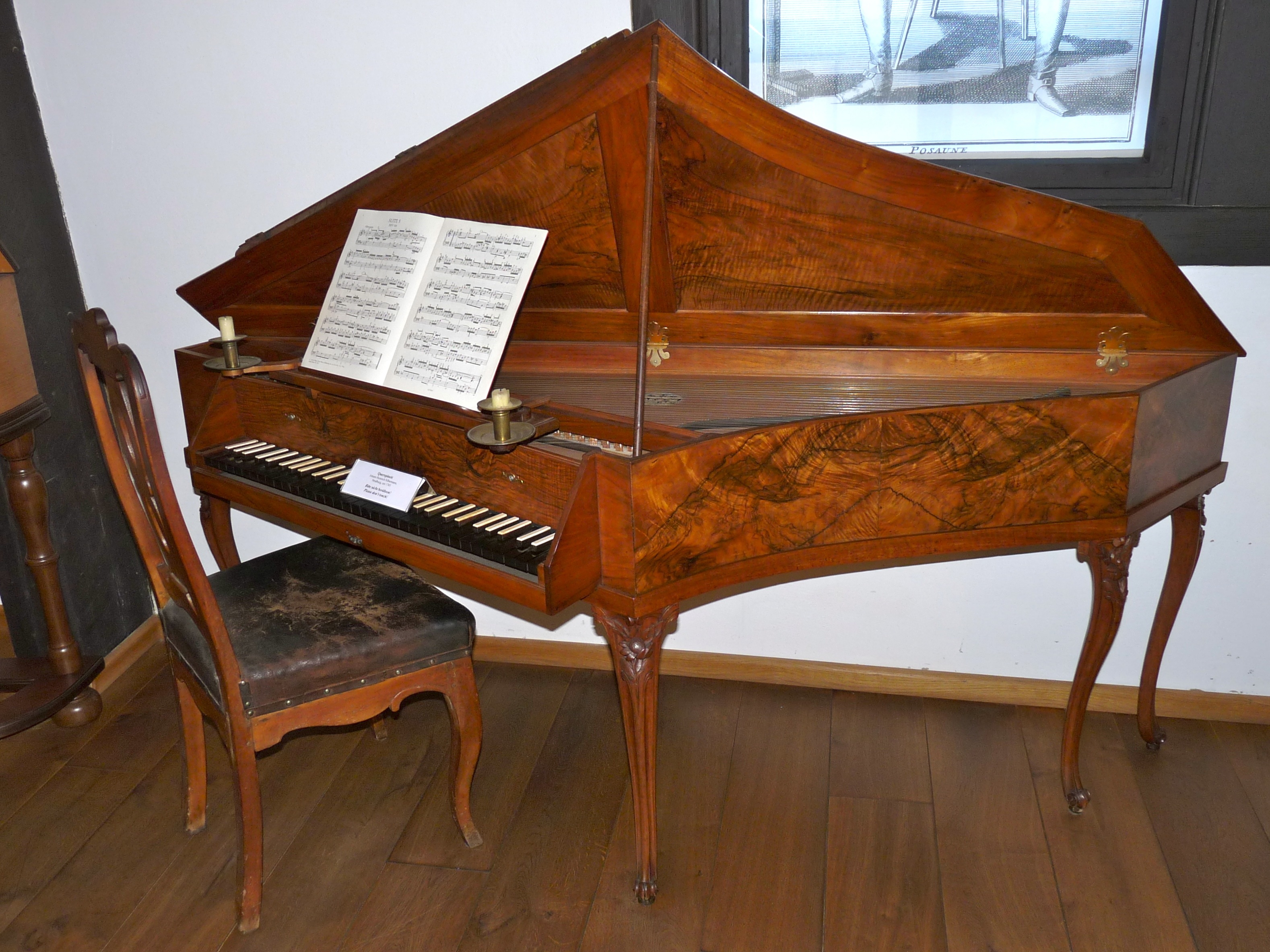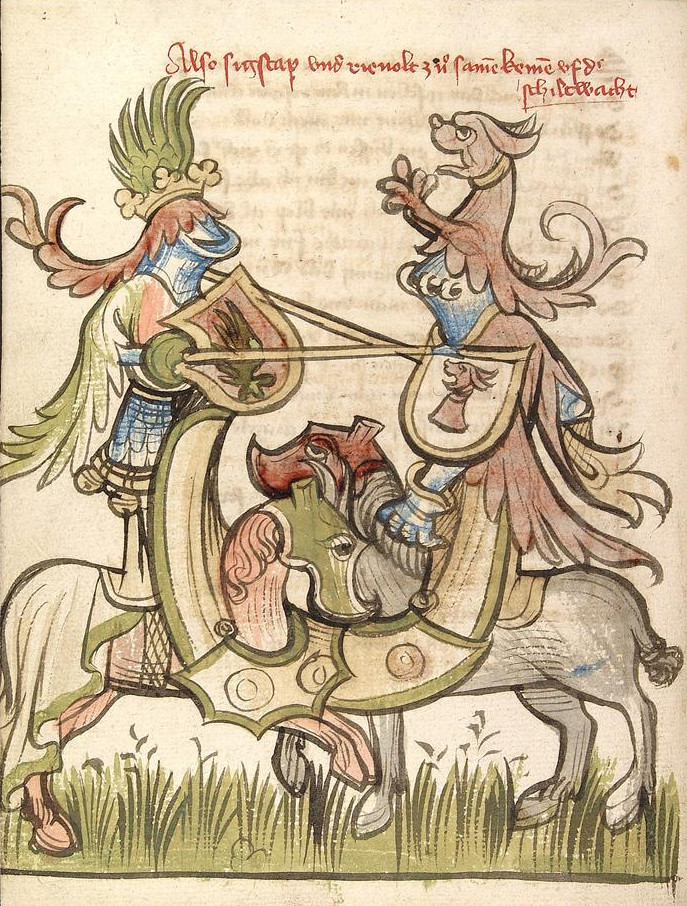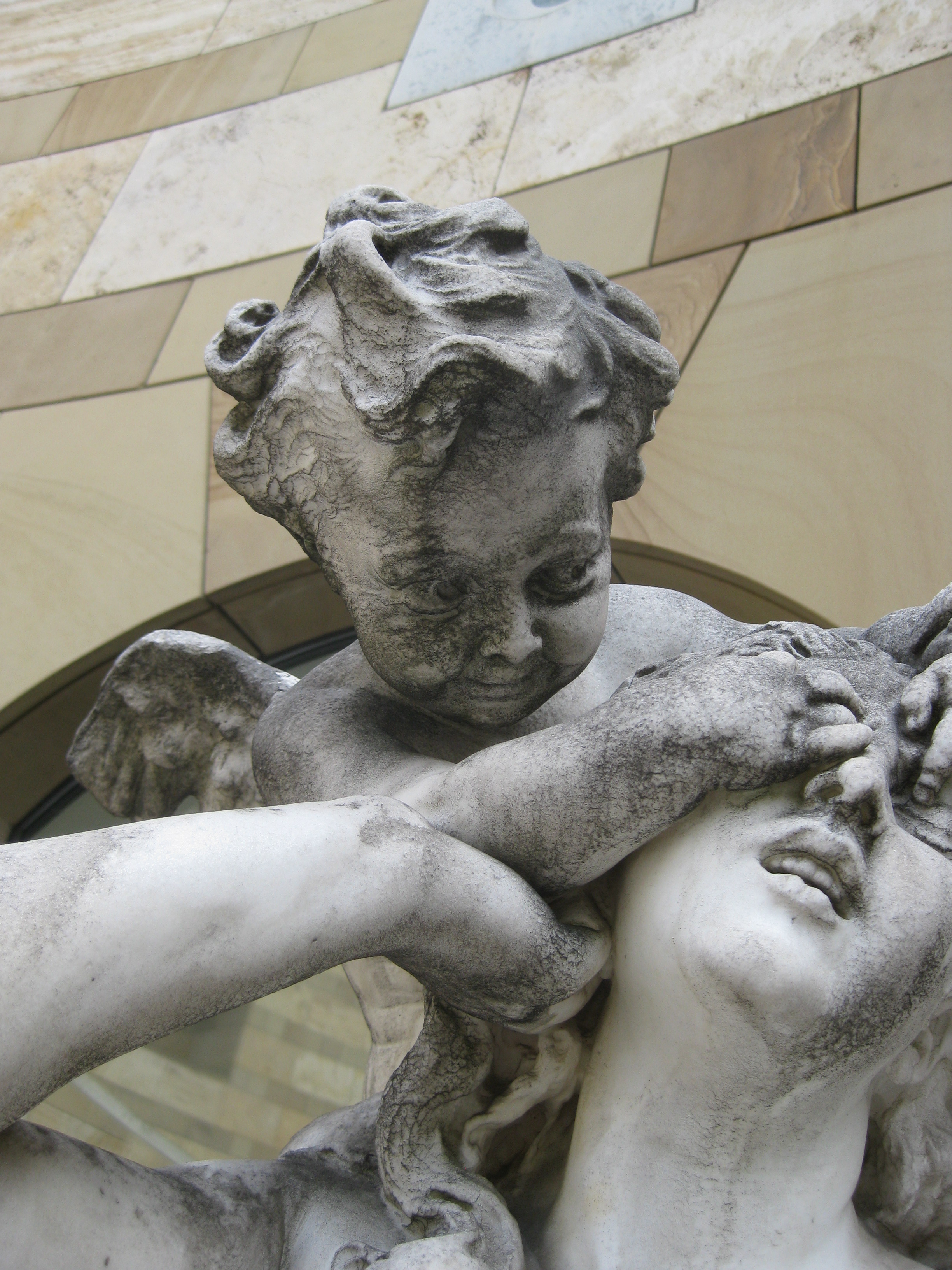|
Clarichord
The clarion (also clarichord, clavicord, rest or sufflue), is a rare charge in heraldry of uncertain meaning and purpose. It originates from England and is still largely exclusive to that country, though latterly it has been imported to other Anglophone nations. In Canadian heraldry, it is the cadency mark of a ninth daughter. It is generally said to represent a kind of wind instrument such as a panpipe or recorder, but does not resemble the trumpet-like clarion known to modern musicians. It may also be intended as an overhead view of a keyboard instrument such as a spinet. Alternatively it has been said to represent a 'rest', a device used by mediaeval knights to support a lance during jousting. In his ''Display of Heraldry'' John Guillim suggests that it may be a rudder. 'Clarion' is also the name given to a stop on an organ which imitates the sound of a trumpet. A verse of poetry published in 1568 does not do much to clarify the issue: External links Clarion illustration a ... [...More Info...] [...Related Items...] OR: [Wikipedia] [Google] [Baidu] |
Spinet
A spinet is a smaller type of harpsichord or other keyboard instrument, such as a piano or organ. Harpsichords When the term ''spinet'' is used to designate a harpsichord, typically what is meant is the ''bentside spinet'', described in this section. For other uses, see below. The bentside spinet shares most of its characteristics with the full-size instrument, including action, soundboard, and case construction. What primarily distinguishes the spinet is the angle of its strings: whereas in a full-size harpsichord, the strings are at a 90-degree angle to the keyboard (that is, they are parallel to the player's gaze); and in virginals they are parallel to the keyboard, in a spinet the strings are at an angle of about 30 degrees to the keyboard, going toward the right. The case of a bentside spinet is approximately triangular. The side on the right is usually bent concavely (hence the name of the instrument), curving away from the player toward the right rear corner. The long ... [...More Info...] [...Related Items...] OR: [Wikipedia] [Google] [Baidu] |
Canadian Heraldry
Canadian heraldry is the cultural tradition and style of coats of arms and other heraldic achievements in both modern and historic Canada. It includes national, provincial, and civic arms, noble and personal arms, ecclesiastical heraldry, heraldic displays as corporate logos, and Canadian blazonry. Derived mainly from heraldic traditions in France and the United Kingdom, Canadian heraldry also incorporates distinctly Canadian symbols, especially native flora and fauna, references to the First Nations, Inuit and other aboriginal peoples of Canada, and uniquely Canadian elements such as the Canadian pale, derived from the Canadian flag. A unique system of cadency is used for daughters inheriting arms, and a special symbol for United Empire Loyalists. In 1988, governance of both personal and corporate heraldry in Canada was patriated from the heraldic authorities in England and Scotland, with the formation of the Canadian Heraldic Authority, which now has exclusive jurisdiction ove ... [...More Info...] [...Related Items...] OR: [Wikipedia] [Google] [Baidu] |
Cadency
In heraldry, cadency is any systematic way to distinguish arms displayed by descendants of the holder of a coat of arms when those family members have not been granted arms in their own right. Cadency is necessary in heraldic systems in which a given design may be owned by only one person at any time, generally the head of the senior line of a particular family. As an armiger's arms may be used 'by courtesy', either by children or spouses, while they are still living, some form of differencing may be required so as not to confuse them with the original undifferenced or "plain coat" arms. Historically, arms were only heritable by males, and therefore cadency marks had no relevance to daughters; in the modern era, Canadian and Irish heraldry include daughters in cadency. These differences are formed by adding to the arms small and inconspicuous marks called brisures, similar to charges but smaller. They are placed on the fess-point, or in-chief in the case of the label.Encycl ... [...More Info...] [...Related Items...] OR: [Wikipedia] [Google] [Baidu] |
Jousting
Jousting is a martial game or hastilude between two horse riders wielding lances with blunted tips, often as part of a tournament (medieval), tournament. The primary aim was to replicate a clash of heavy cavalry, with each participant trying to strike the opponent while riding towards him at high speed, breaking the lance on the opponent's shield or jousting armour if possible, or unhorsing him. The joust became an iconic characteristic of the knight (stock character), knight in Romantic medievalism. The participants experience close to three and a quarter times their body weight in G-forces when the lances collide with their armour. The term is derived from Old French , ultimately from Latin "to approach, to meet". The word was loaned into Middle English around 1300, when jousting was a very popular sport among the Anglo-Normans, Anglo-Norman knighthood. The synonym tilt (as in tilting at windmills) dates . Jousting is based on the military use of the lance by heavy cavalry. ... [...More Info...] [...Related Items...] OR: [Wikipedia] [Google] [Baidu] |
Idiom
An idiom is a phrase or expression that typically presents a figurative, non-literal meaning attached to the phrase; but some phrases become figurative idioms while retaining the literal meaning of the phrase. Categorized as formulaic language, an idiom's figurative meaning is different from the literal meaning. Idioms occur frequently in all languages; in English alone there are an estimated twenty-five million idiomatic expressions. Derivations Many idiomatic expressions were meant literally in their original use, but sometimes the attribution of the literal meaning changed and the phrase itself grew away from its original roots—typically leading to a folk etymology. For instance, the phrase "spill the beans" (meaning to reveal a secret) is first attested in 1919, but has been said to originate from an ancient method of voting by depositing beans in jars, which could be spilled, prematurely revealing the results. Other idioms are deliberately figurative. For example, "break ... [...More Info...] [...Related Items...] OR: [Wikipedia] [Google] [Baidu] |
Indiana University
Indiana University (IU) is a system of public universities in the U.S. state of Indiana. Campuses Indiana University has two core campuses, five regional campuses, and two regional centers under the administration of IUPUI. *Indiana University Bloomington (IU Bloomington) is the flagship campus of Indiana University. The Bloomington campus is home to numerous premier Indiana University schools, including the College of Arts and Sciences, the Jacobs School of Music, an extension of the Indiana University School of Medicine, the School of Informatics, Computing, and Engineering, which includes the former School of Library and Information Science (now Department of Library and Information Science), School of Optometry, the O'Neil School of Public and Environmental Affairs, the Maurer School of Law, the School of Education, and the Kelley School of Business. *Indiana University–Purdue University Indianapolis (IUPUI), a partnership between Indiana University and Purdue Universi ... [...More Info...] [...Related Items...] OR: [Wikipedia] [Google] [Baidu] |
University Of Nebraska
A university () is an institution of higher (or tertiary) education and research which awards academic degrees in several academic disciplines. Universities typically offer both undergraduate and postgraduate programs. In the United States, the designation is reserved for colleges that have a graduate school. The word ''university'' is derived from the Latin ''universitas magistrorum et scholarium'', which roughly means "community of teachers and scholars". The first universities were created in Europe by Catholic Church monks. The University of Bologna (''Università di Bologna''), founded in 1088, is the first university in the sense of: *Being a high degree-awarding institute. *Having independence from the ecclesiastic schools, although conducted by both clergy and non-clergy. *Using the word ''universitas'' (which was coined at its foundation). *Issuing secular and non-secular degrees: grammar, rhetoric, logic, theology, canon law, notarial law.Hunt Janin: "The university i ... [...More Info...] [...Related Items...] OR: [Wikipedia] [Google] [Baidu] |
Center For The History Of Music Theory And Literature
Center or centre may refer to: Mathematics *Center (geometry), the middle of an object * Center (algebra), used in various contexts ** Center (group theory) ** Center (ring theory) * Graph center, the set of all vertices of minimum eccentricity Places United States * Centre, Alabama * Center, Colorado * Center, Georgia * Center, Indiana * Center, Jay County, Indiana * Center, Warrick County, Indiana * Center, Kentucky * Center, Missouri * Center, Nebraska * Center, North Dakota * Centre County, Pennsylvania * Center, Portland, Oregon * Center, Texas * Center, Washington * Center, Outagamie County, Wisconsin * Center, Rock County, Wisconsin **Center (community), Wisconsin *Center Township (other) *Centre Township (other) *Centre Avenue (other) *Center Hill (other) Other countries * Centre region, Hainaut, Belgium * Centre Region, Burkina Faso * Centre Region (Cameroon) * Centre-Val de Loire, formerly Centre, France * Centre (department), Ha ... [...More Info...] [...Related Items...] OR: [Wikipedia] [Google] [Baidu] |
Organ (music)
Carol Williams performing at the United States Military Academy West Point Cadet Chapel.">West_Point_Cadet_Chapel.html" ;"title="United States Military Academy West Point Cadet Chapel">United States Military Academy West Point Cadet Chapel. In music, the organ is a keyboard instrument of one or more Pipe organ, pipe divisions or other means for producing tones, each played from its own Manual (music), manual, with the hands, or pedalboard, with the feet. Overview Overview includes: * Pipe organs, which use air moving through pipes to produce sounds. Since the 16th century, pipe organs have used various materials for pipes, which can vary widely in timbre and volume. Increasingly hybrid organs are appearing in which pipes are augmented with electric additions. Great economies of space and cost are possible especially when the lowest (and largest) of the pipes can be replaced; * Non-piped organs, which include: ** pump organs, also known as reed organs or harmoniums, which ... [...More Info...] [...Related Items...] OR: [Wikipedia] [Google] [Baidu] |
Rudder
A rudder is a primary control surface used to steer a ship, boat, submarine, hovercraft, aircraft, or other vehicle that moves through a fluid medium (generally aircraft, air or watercraft, water). On an aircraft the rudder is used primarily to counter adverse yaw and p-factor and is not the primary control used to turn the airplane. A rudder operates by redirecting the fluid past the hull (watercraft), hull or fuselage, thus imparting a turning or yaw (rotation), yawing motion to the craft. In basic form, a rudder is a flat plane or sheet of material attached with hinges to the craft's stern, tail, or after end. Often rudders are shaped so as to minimize Drag (physics), hydrodynamic or aerodynamic drag. On simple watercraft, a tiller—essentially, a stick or pole acting as a lever arm—may be attached to the top of the rudder to allow it to be turned by a helmsman. In larger vessels, cables, pushrods, or hydraulics may be used to link rudders to steering wheels. In typical air ... [...More Info...] [...Related Items...] OR: [Wikipedia] [Google] [Baidu] |
John Guillim
John Guillim (c. 1565 – 7 May 1621) of Minsterworth, Gloucestershire, was an antiquarian and officer of arms at the College of Arms in London. He is best remembered for his monumental work on heraldry, ''A Display of Heraldry'', first published in London in 1610. Early life and education Most sources date the birth of John Guillim to 1565 in the county of Herefordshire, Hereford.Dictionary of National Biography (Vol. 23), ed. Stephen, Leslie, Sir, 1890 However, it is possible he may have been born around 1550. He was the son of John Guillim of Westbury-on-Severn in Gloucestershire. This part of England is very close to the border with Wales and Guillim's ancestors were probably of Welsh extraction. He was educated at Brasenose College, Oxford, Brasenose College in Oxford University. Heraldic career The first record of his involvement with heraldry is the Earl Marshal's warrant, dated 23 February 1604, permitting him to wear the tabard of the Portsmouth Pursuivant Extraord ... [...More Info...] [...Related Items...] OR: [Wikipedia] [Google] [Baidu] |
Clarion (blue)
Clarion may refer to: Music * Clarion (instrument), a type of trumpet used in the Middle Ages * The register of a clarinet that ranges from B4 to C6 * A trumpet organ stop that usually plays an octave above unison pitch * "Clarion" (song), a 2008 single by multinational band Guillemots Places Mexico * Clarion Island (Isla Clarión), Colima United States * Clarion, Illinois * Clarion, Iowa * Clarion, Michigan * Clarion, Utah, a ghost town settled as a Jewish farming colony Pennsylvania * Clarion County, Pennsylvania ** Clarion, Pennsylvania, a borough in and the county seat of Clarion County ** Clarion Township, Clarion County, Pennsylvania * Clarion River, Pennsylvania, a tributary of the Allegheny River * Clarion University of Pennsylvania, a public university located in Clarion, Pennsylvania Publishing * ''Peninsula Clarion'', a regional newspaper published in Kenai, Alaska, U.S. * ''Clarion Herald'', the official newspaper of the Archdiocese of New Orleans in the U.S. sta ... [...More Info...] [...Related Items...] OR: [Wikipedia] [Google] [Baidu] |
.png)





